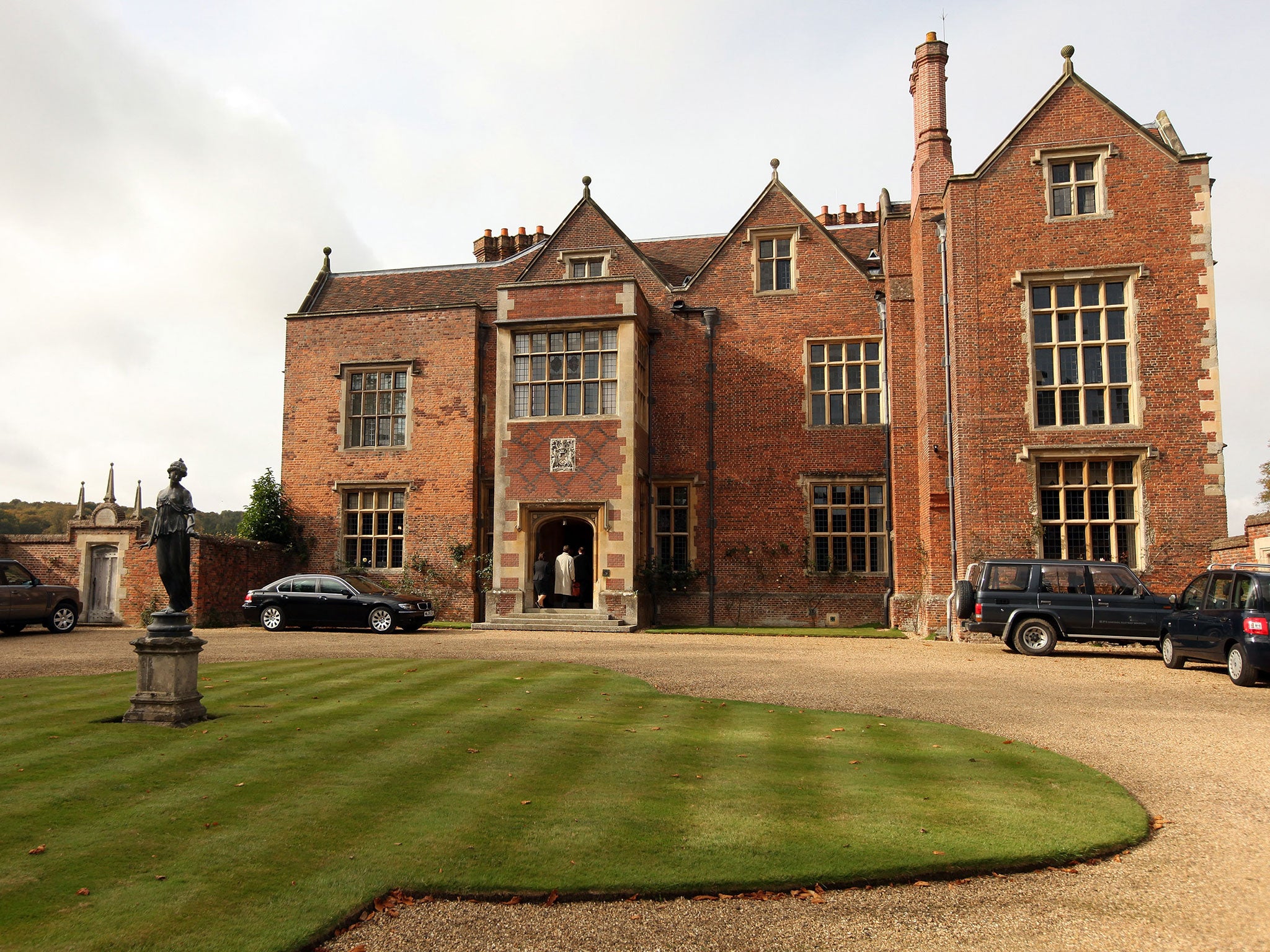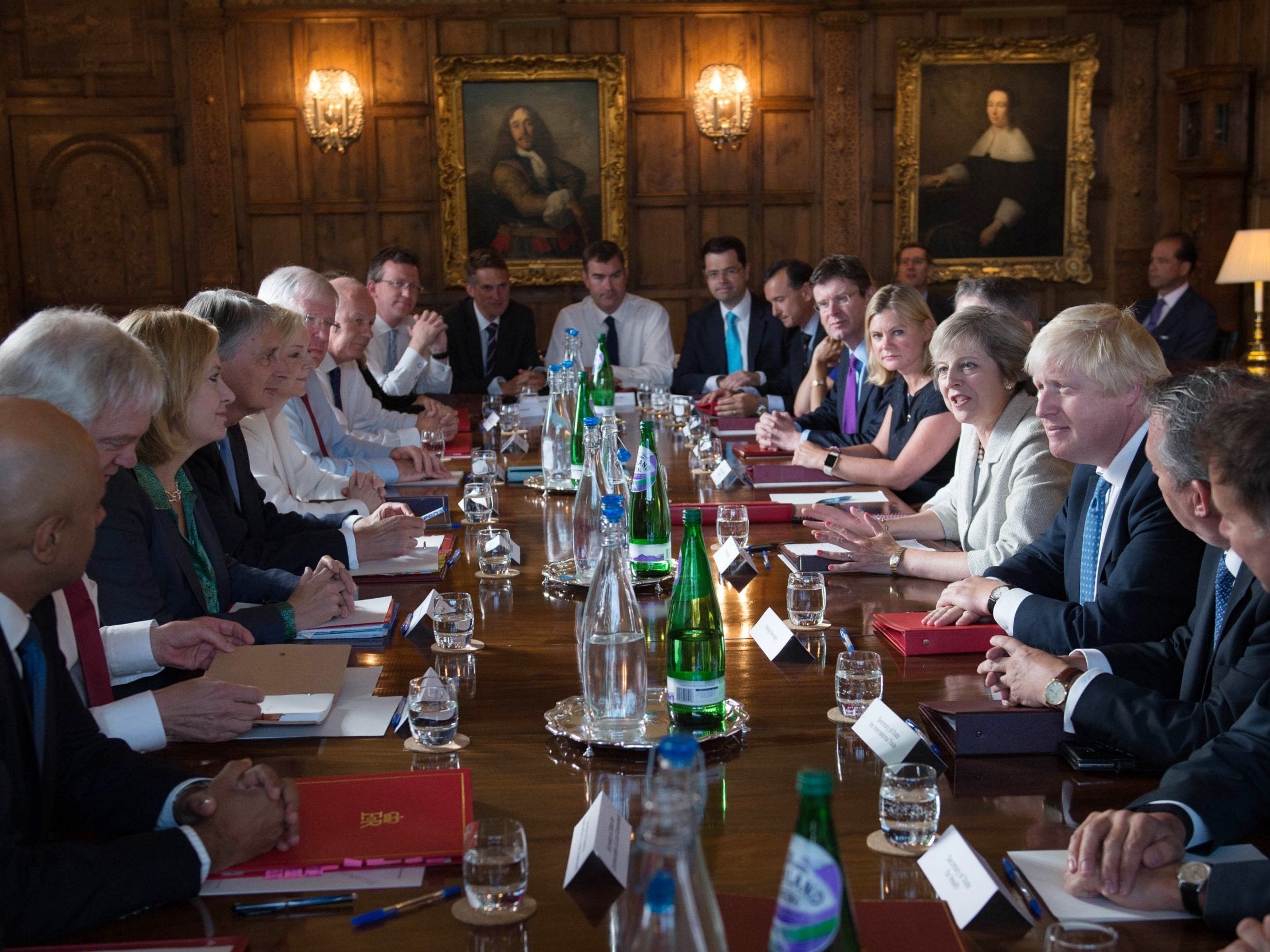Chequers: A brief history of the British prime minister's country residence
Theresa May to host Donald Trump at grand Buckinghamshire estate built in the Elizabethan era and gifted to the nation in 1917
Your support helps us to tell the story
From reproductive rights to climate change to Big Tech, The Independent is on the ground when the story is developing. Whether it's investigating the financials of Elon Musk's pro-Trump PAC or producing our latest documentary, 'The A Word', which shines a light on the American women fighting for reproductive rights, we know how important it is to parse out the facts from the messaging.
At such a critical moment in US history, we need reporters on the ground. Your donation allows us to keep sending journalists to speak to both sides of the story.
The Independent is trusted by Americans across the entire political spectrum. And unlike many other quality news outlets, we choose not to lock Americans out of our reporting and analysis with paywalls. We believe quality journalism should be available to everyone, paid for by those who can afford it.
Your support makes all the difference.Donald Trump will spend time at Chequers during his four-day “working visit” to Britain this weekend.
Preferring to sidestep the inconvenient truth of mass protests in London and insist that “they like me a lot in the UK”, the US president will meet with Theresa May at the prime minister’s official country residence in Buckinghamshire.
A week earlier, the historic house hosted the ill-fated cabinet Brexit conference, the outcome of which saw both the Brexit secretary, David Davis, and the foreign secretary, Boris Johnson, resign in protest at a plan for Britain’s withdrawal from the EU that they found unpalatable.

The 1,000 acre estate has been in public hands since 1917, when its then owners, former minister and First Lord of the Admiralty, Sir Arthur Lee and his American heiress wife Ruth, donated it to the British government on the grounds that the prime minister should not necessarily be expected to own their own rural retreat, a gesture representing a sea change in UK politics. No longer would government be assumed to be the exclusive preserve of the landed gentry.
As the Chequers Estate Act 1917 expresses it: “It is not possible to foresee or foretell from what classes or conditions of life the future wielders of power in this country will be drawn.”
A building has stood on the site just south of Aylesbury since at least the 12th century. Its name has been attributed to one of its earliest residents, Elias Ostiarius, whose surname indicates he worked as an usher at the Court of the Exchequer. Alternatively, it may derive from the chequer trees that grown in the grounds.
The house, in its current guise, was designed and owned by William Hawtrey in 1565.
As soon as it was completed, Queen Elizabeth I ordered its use for the detention of Lady Mary Grey, younger sister of Lady Jane Grey, who had married Elizabeth’s serjeant porter Thomas Keyes in secret and without the monarch’s consent. She was held at Chequers Court between 1565 and 1567 as punishment and in order to ensure she had no heirs with a claim to the throne.
Over the decades the house passed through the hands of many wealthy families, including in 1715 that of John Russell, grandson of Oliver Cromwell. Chequers retains a fine collection of English Civil War portraiture and antiques to this day – as well as many other artefacts, including a diary and pocket watch kept by Admiral Lord Nelson, a dispatch case belonging to Napoleon Bonaparte and Elizabeth’s ring.

Sir George Russell, another ancestor, made drastic changes to the property in 1832, having Hawtrey’s Tudor panels stripped out and remodelling the property externally in the then modish neo-Gothic style.
When the Astley family acquired Chequers in the late Victorian era, they restored it to its original Elizabethan glory under the guidance of admired architecture Sir Reginald Blomfield, who returned to carry out further revision to the interiors under the Lees in 1909.
Chequers was used as a convalescent home for recovering officers in the aftermath of the First World War after which the Lees made the decision to gift the house to the nation under David Lloyd George.
A farewell banquet was held to mark their moving out on 8 January 1921 and a commemorative stained glass window installed, bearing the message: “This house of peace and ancient memories was given to England as a thank-offering for her deliverance in the great war of 1914-1918 as a place of rest and recreation for her Prime Ministers for ever.”
Since then, the house has played host to hundreds of eminent (and more questionable) world leaders and public figures, including Richard Nixon, Mikhail Gorbachev, Robert Mugabe, Vladimir Putin, Angela Merkel and Xi Jinping.
Momentous events have also taken place within its walls, from PM Neville Chamberlain's nervous breakdown in September 1939 to foreign secretary Anthony Eden receiving notification that Nazi Germany had attacked Russia in June 1941.
Margaret Thatcher said of the residence: “I do not think anyone has stayed long at Chequers without falling in love with it.”
Her husband Denis emphatically agreed: “Chequers is why you get the job”. So much for a life of selfless dedication to public service.
Norma Major, wife of Conservative prime minister John, liked it so much she wrote a book about it, Chequers: The Prime Minister's Country House and Its History.

Join our commenting forum
Join thought-provoking conversations, follow other Independent readers and see their replies
Comments